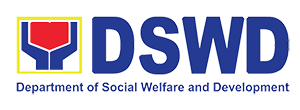The Department of Social Welfare and Development (DSWD) recently held talks with the Pambansang Lakas ng Kilusang Mamamalakaya ng Pilipinas (Pamalakaya), a group of fisherfolk, to explain the policy on the provision of Emergency Shelter Assistance (ESA) program.
DSWD-Disaster Response and Management Bureau (DreamB) Director Theresa Briones who led the dialogue explained that in accordance with Memorandum Circular No. 24 or Guidelines on the implementation of the Emergency Shelter Assistance, the ESA is provided to the following: affected families who have no permanent sources of income or whose income is below the poverty threshold of the region; families whose heads are not permanent or regular employees and do not have access to housing loans; and families whose fixed monthly salary is below P15,000 and have not received the same assistance from other agencies.
Dir. Briones further explained that the criteria were set to prioritize families who are most in need of the government’s assistance.
PAMALAKAYA accepted the explanation; however, the group demanded for additional ESA budget so that all disaster-affected families can be provided with the P30,000 and P10,000 financial assistance for houses that were totally and partially damaged, respectively.
Dir. Briones pointed out that DSWD only serves ‘Yolanda’-affected families who are residing within the safe areas, while the National Housing Authority (NHA) and the Housing for Urban Development Coordinating Council (HUDCC) provide the relocation sites for affected families living outside the safe zones.
She also shared that as per DSWD Memorandum Circular No. 24, the families are required to present their DSWD-Disaster Family Access Cards (DAFAC), which indicates whether their houses are partially or totally damaged.
Dr. Briones clarified that DSWD does not require tax declaration and tax clearance from family beneficiaries as they are not indicated in the guidelines. She added that in cases where the beneficiary does not have any basic identification card, the Barangay Clearance/Certification, together with the DAFAC serves as an alternative authentication.
Moreover, the set Guidelines require the LGUs to submit the following documents to process the ESA: disaster terminal report; project proposal; rehabilitation plan; certificate of eligibility of beneficiaries; masterlist of beneficiaries; comprehensive land use plan (CLUP); and, certification that the relocation areas are safe from hazards based from the CLUP.
Non-completion of needed documents will lead to delays in the processing of the ESA, as the said the requirements are necessary for accountability and compliance with the Commission on Audit (COA).
She further shared that the LGUs schedule and conduct the distribution of cash assistance to their constituents while the DSWD monitors the release of ESA funds to the family-beneficiaries.
To date, of the P18.6 billion budget allocation for ESA implementation, P14.72 billion has been released by DBM.
Dir. Briones assured PAMALAKAYA that the Department is doing its best to expedite the provision of ESA to the qualified survivors according to the guidelines set.
As for assistance to families affected by Typhoons Ruby and Seniang, she said that the DBM will release the budget this month.
She also encouraged the group and other CSOs to immediately report any anomaly on the implementation of ESA to their respective LGUs or to the concerned DSWD-Field Office. ###


